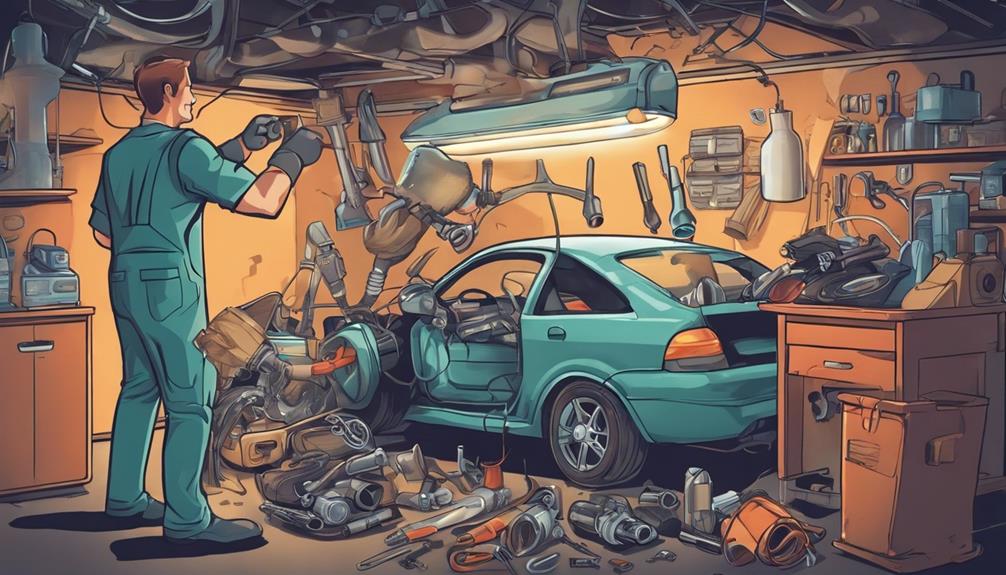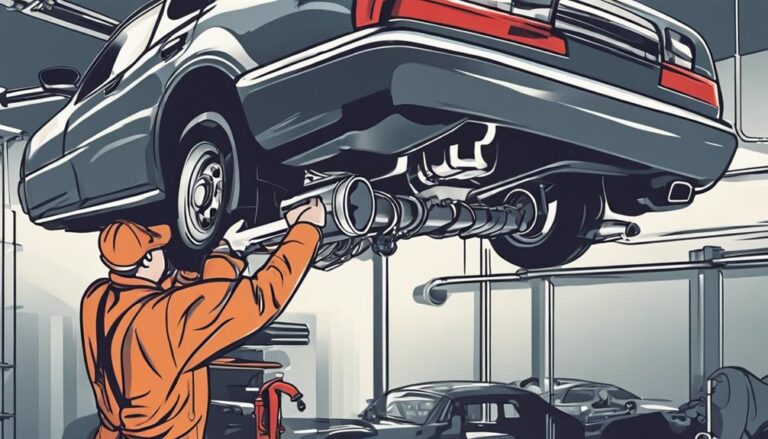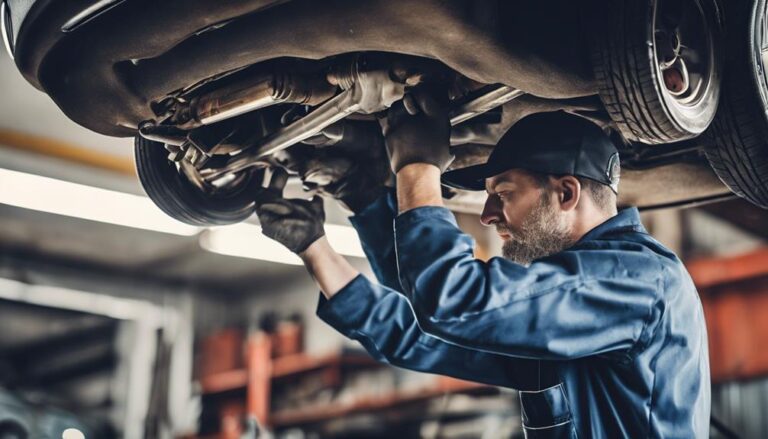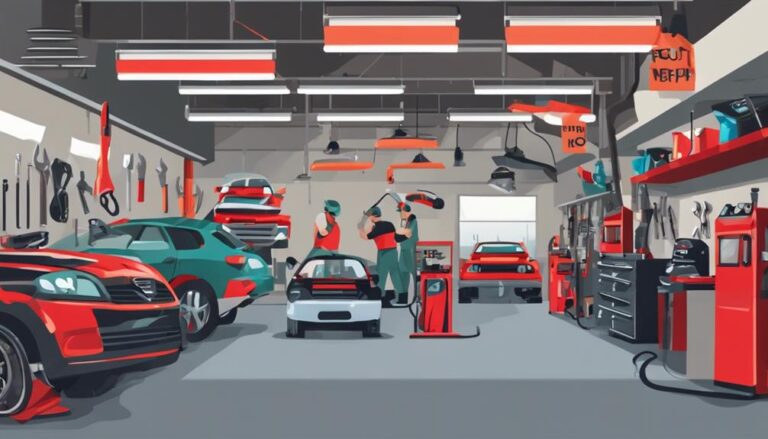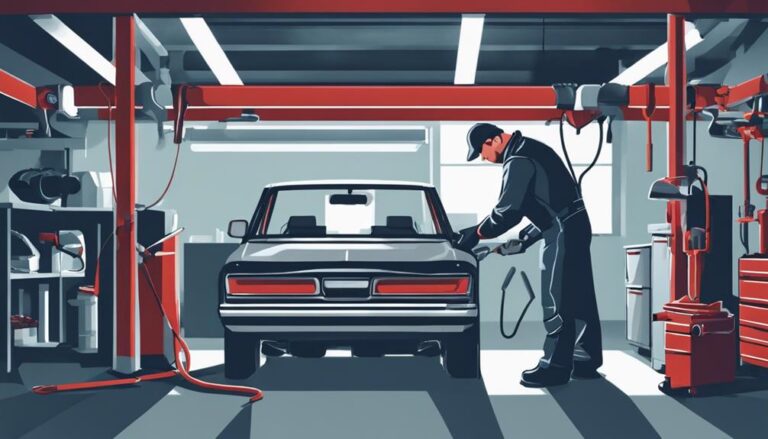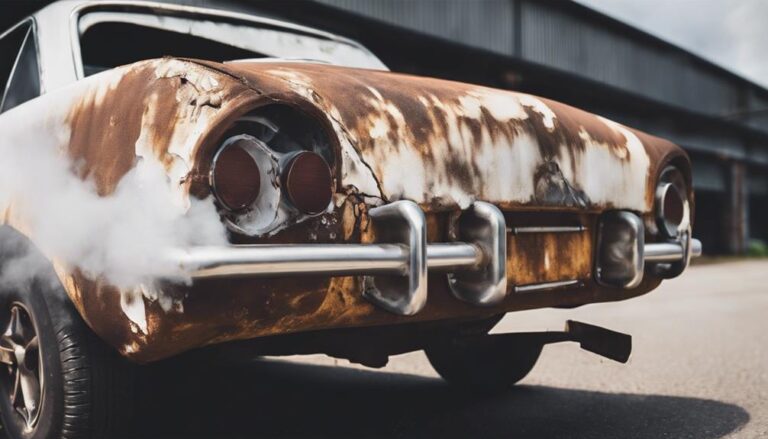Sustainable Solutions for Exhaust System Repairs
When it comes to the intricate network of your vehicle's exhaust system, each component serves as a vital piece of a larger puzzle. Imagine the exhaust system as the lungs of your car, responsible for expelling harmful emissions and maintaining optimal performance.
However, what happens when these crucial parts begin to falter, impacting not just your vehicle but the environment as well? Let's explore sustainable solutions that not only address these issues but pave the way for a greener automotive future.
Key Takeaways
- Opt for eco-friendly materials like recycled copper and non-toxic components for exhaust repairs.
- Implement recycling and upcycling initiatives to reduce waste and conserve resources.
- Utilize energy-efficient repair practices with green technologies and renewable energy sources.
- Embrace innovative technologies for sustainable exhaust system repairs to minimize environmental impact.
Eco-Friendly Replacement Parts
When seeking eco-friendly replacement parts for exhaust system repairs, opt for components made from recycled materials like copper and non-toxic options such as cast iron pipes. Green manufacturing processes play a crucial role in producing environmentally friendly exhaust components. By choosing eco-conscious materials, you contribute to sustainable repair practices and reduce the overall environmental impact of your vehicle maintenance. These sustainable solutions not only help in minimizing waste but also promote a healthier ecosystem by avoiding harmful toxins that can be present in traditional exhaust system parts.
Utilizing recycled materials in exhaust system repairs is a significant step towards supporting sustainability efforts. Incorporating green and non-toxic plumbing choices ensures that the quality and durability of the replacement parts are maintained while aligning with eco-conscious practices. The advancements in eco-friendly replacement parts for exhaust systems not only benefit your vehicle's performance but also contribute to a cleaner environment and long-term sustainability goals.
Recycling Old Exhaust Components
Recycling old exhaust components in the automotive industry promotes sustainability by reducing waste and conserving valuable resources and energy.
Scrap metal recycling plays a crucial role in this process, as materials like steel and aluminum can be extracted from used exhaust parts and repurposed for new applications.
Upcycled exhaust art is another innovative way to give old components a new life, turning them into unique and creative pieces of art while also preventing them from ending up in landfills.
Energy-Efficient Repair Techniques
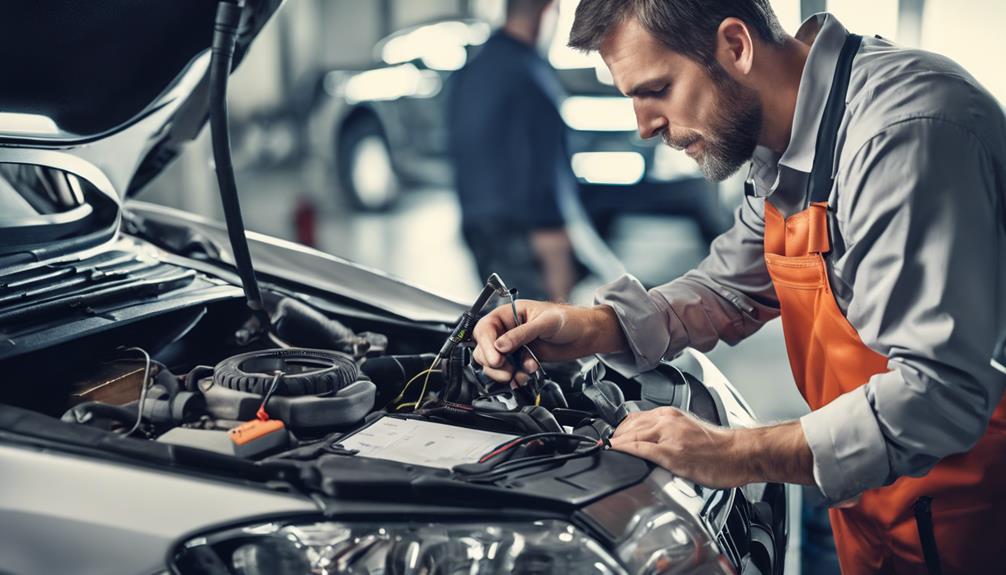
To enhance the environmental sustainability of exhaust system repairs, consider implementing energy-efficient repair techniques that minimize carbon emissions and promote eco-conscious practices in automotive maintenance. Energy-efficient repair techniques offer a way to reduce the environmental impact of exhaust system repairs while embracing green technologies.
Here are three key points to consider:
- Utilization of Recyclable Materials: Opt for repair materials that are recyclable to minimize waste and promote a circular economy in automotive maintenance.
- Integration of Green Technologies: Incorporate green technologies such as solar-powered equipment or energy-efficient tools to reduce energy consumption during repair processes.
- Renewable Energy Sources: Consider utilizing renewable energy sources like solar or wind power in repair facilities to lower reliance on non-renewable resources and decrease carbon emissions.
Water Conservation Strategies
Implementing water-saving practices in exhaust system repairs enhances sustainability and minimizes water usage. When working on exhaust systems, opting for drought-resistant coatings and utilizing waterless degreasers can significantly reduce water consumption. Take a look at the table below for more insights on water conservation strategies during repair processes:
| Water Conservation Strategies | Description | Benefits |
|---|---|---|
| Drought Resistant Coatings | Applying coatings that require minimal water for curing and maintenance. | Reduces water usage and helps protect the environment. |
| Waterless Degreasers | Using degreasers that do not require water for effective cleaning. | Saves water, prevents contamination, and enhances efficiency. |
| Eco-Friendly Cleaning Techniques | Implementing techniques that minimize water usage while maintaining cleanliness. | Promotes sustainability and reduces environmental impact. |
| Water-Efficient Equipment | Utilizing tools and machinery that are designed to conserve water during repairs. | Minimizes water wastage and promotes efficiency. |
| Containment Measures | Implementing proper containment to prevent water runoff and contamination. | Helps maintain a clean working environment and prevents water wastage. |
Innovative Exhaust Repair Technologies
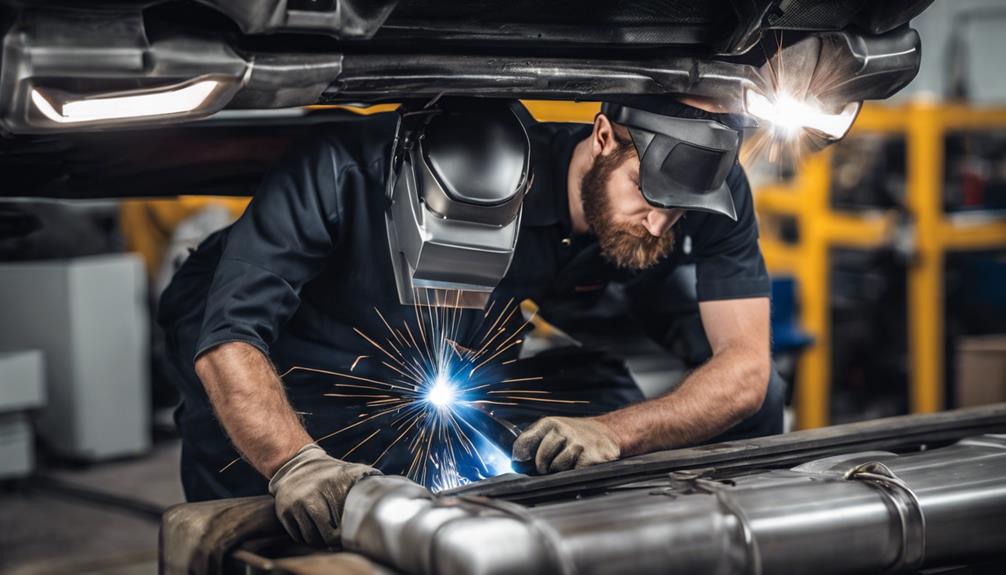
Innovative exhaust repair technologies incorporate eco-friendly materials to minimize environmental impact and enhance sustainability. By utilizing green materials, these advanced methods not only reduce the carbon footprint but also promote a healthier environment. Along with environmental benefits, these technologies offer longevity advantages for exhaust system repairs.
Here are three key aspects highlighting the significance of innovative exhaust repair technologies:
- Environmental Impact: The use of eco-friendly materials in exhaust repair contributes to reducing waste and promoting recycling practices, aligning with eco-conscious initiatives for a sustainable future.
- Durability: Cutting-edge techniques focus on improving the efficiency and longevity of exhaust system repairs, ensuring that the repaired systems have an extended lifespan and require fewer replacements.
- Efficiency: By prioritizing sustainability, these technologies aim to enhance the overall performance of exhaust systems, leading to reduced maintenance needs and increased operational efficiency.
Frequently Asked Questions
What Can I Use to Fix My Exhaust?
When fixing your exhaust, consider temporary alternatives like clamps, tape, or epoxy putty. For a long-lasting solution, opt for stainless steel repair kits or professional welding services. DIY options are great for quick fixes.
What Is the Biggest Problem With a Broken Exhaust System?
When your exhaust system breaks, the biggest problem is its impact on the environment through increased emissions and noise pollution. Act swiftly to avoid further damage, higher costs, health risks, and disturbances to your surroundings.
How Do You Maintain an Exhaust System?
To maintain an exhaust system, conduct preventative maintenance by inspecting and cleaning components regularly. Securely mount the system to prevent misalignment. Use high-quality parts for longevity. Address leaks promptly and follow the maintenance schedule for optimal performance.
What Is the Useful Life of an Exhaust System?
The useful life of an exhaust system varies but generally ranges from 5 to 7 years. Factors like driving habits and maintenance frequency can impact longevity expectations. Regular inspection and maintenance are crucial for environmental impact.
Conclusion
You have now learned about sustainable solutions for exhaust system repairs, from eco-friendly replacement parts to innovative repair technologies. By implementing these strategies, you can reduce emissions, improve vehicle performance, and minimize environmental impact.
Stay tuned for more advancements in eco-friendly exhaust repair techniques that will continue to promote long-term environmental sustainability. Embrace these solutions and drive towards a cleaner, greener future for all.

